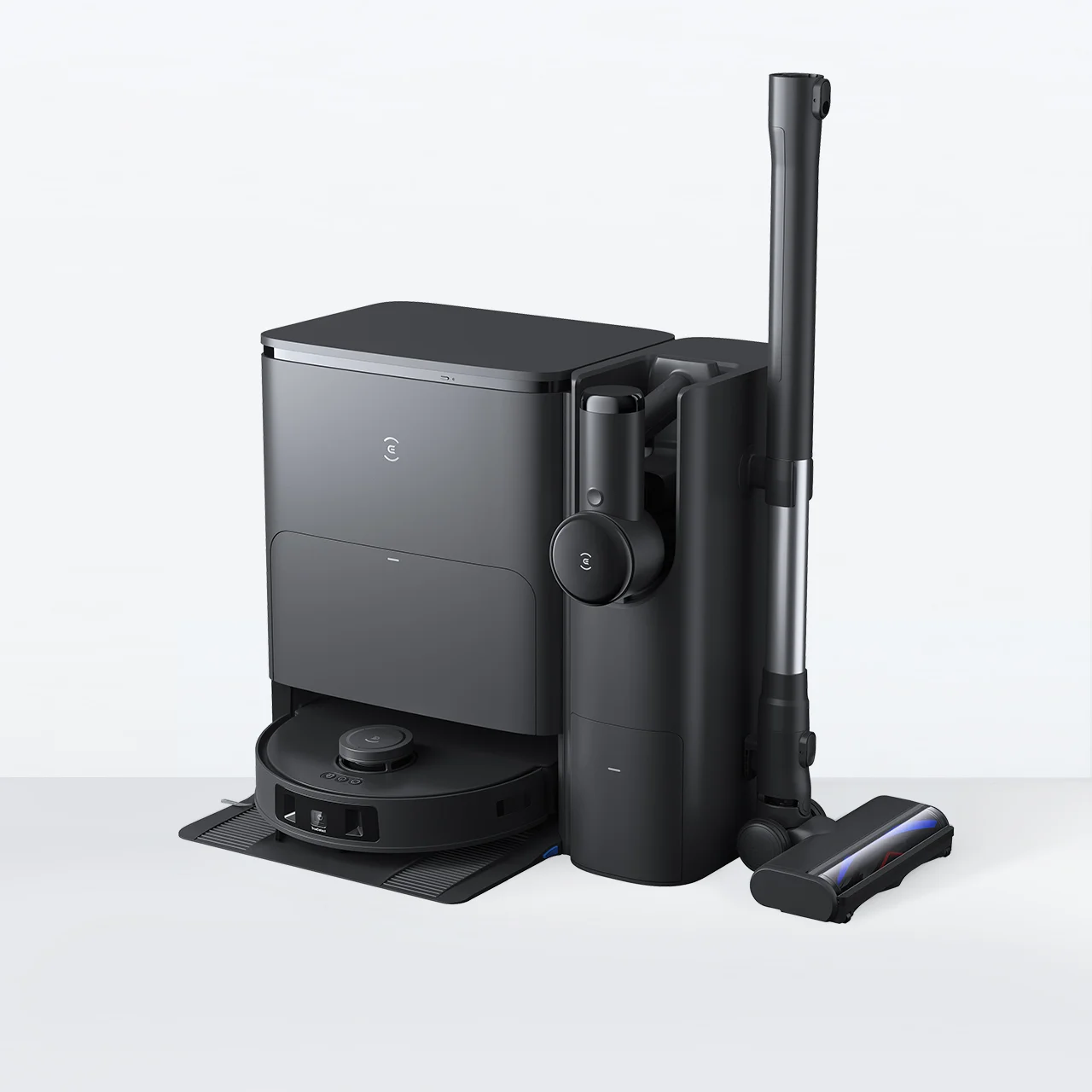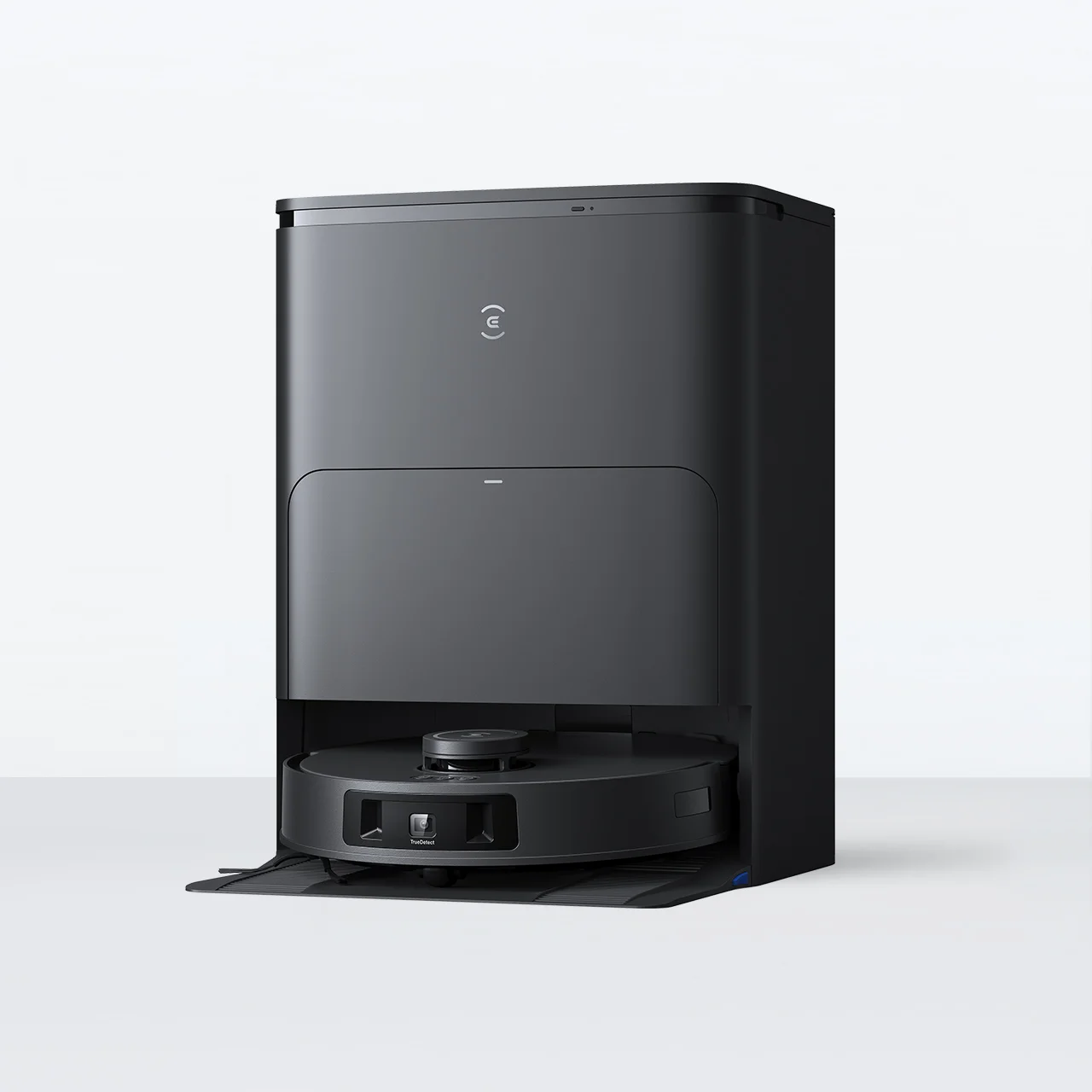
Keeping your home clean is essential, but it can be a time-consuming task. A study conducted by the US Bureau of Labor Statistics found that Americans spend an average of 1.92 hours a day on household activities — of which 0.37 hours are dedicated to cleaning their homes, second only to how much time they devote to food prep and cleaning up afterward (0.65 hours a day).
Robot vacuum cleaners, with their ability to automatically clean a home with minimal manual intervention, can reduce the time you take to your home clean, thanks to their navigation technology. The two main systems guiding these smart devices are LiDAR and vSLAM, and understanding how they work can help you choose the right robot vacuum that meets your cleaning needs and suits your lifestyle.
What is the Difference Between vSLAM and LiDAR?
vSLAM (Visual Simultaneous Localization and Mapping) and LiDAR (Light Detection and Ranging) are two key technologies that help robot vacuums navigate your home. The main difference between LiDAR and vSLAM is how they gather and process data to map their surroundings.

LiDAR uses laser sensors to measure distances by bouncing light off objects, creating a 3D map of the environment in the process. However, vSLAM relies on cameras to visually capture and interpret your space, building a map based on what it “sees”. LiDAR generally produces precise and consistent mapping, making it ideal for larger or more complex spaces. vSLAM, while slightly less accurate, works best in environments with several visual features.
Why Do Robotic Vacuums Use vSLAM or LiDAR for Navigation?
Older models of smart vacuums, and even some current budget varieties, work on the bump-and-run principle by which they don’t have specialized sensors or software to help the device avoid furniture, walls, or other obstructions.
However, smart vacuums with vSLAM and LiDAR give your home a thorough clean by ensuring they know exactly where they’ve been and where they need to go next, all while adapting to different obstacles and floor surfaces as they move.

Robot vacuums that use both of these navigation systems can effectively map your space to clean more efficiently, avoid obstacles better, cover larger areas without missing spots or going over areas that have already been cleaned, and return to their docking stations to charge or when it’s done cleaning. In addition, the maps these systems generate can be viewed on companion apps so you can track the device’s progress.
Since automatic vacuums with LiDAR and vSLAM gather data differently — sensors as opposed to cameras — it impacts how well they work in different environments. Devices with LiDAR-based technology navigate accurately, even in low-light conditions. On the other hand, vSLAM is more suited to well-lit surroundings as it relies on cameras to visually map the space.
How Does LiDAR Work in Robot Vacuums?
Robot vacuum cleaners with LiDAR user their sensors to emit tiny laser pulses that bounce off objects in your home, then measure how long it takes for each pulse to return. This is called the Time of Flight. By doing this rapidly in all directions, the LiDAR system creates an extremely accurate map of your space to plan the most efficient cleaning route for the robot vacuum.
LiDAR sensors are generally placed on the top of smart vacuums, but there are exceptions, such as the ECOVACS DEEBOT X2 OMNI, which has its sensor embedded in the body of the device, allowing it to detect objects 10 meters away with a 210-degree angle of view. This model is equipped with dual-laser LiDAR and the AINA deep learning model, which allows it to learn about and quickly respond to complex indoor environments such as complicated layouts, as well as dynamic situations like running kids and pets.

The main advantage of using LiDAR is its precision — it knows exactly where walls, furniture, and other obstacles are, which helps the vacuum clean more efficiently and quickly and avoid no-go zones. Another benefit to using LiDAR is its reliability, as smart vacuums that use this technology perform well in low-light or dark conditions, which is typically where camera-based systems might falter. LiDAR-based navigation is especially useful in homes with large open spaces or complicated layouts because it can map these areas precisely and adjust the device’s cleaning path accordingly.
How Does vSLAM Work in Robot Vacuums?
Simply put, vSLAM gives your robot vacuum the ability to navigate your home using a camera. It does this by allowing the vacuum to capture images of its surroundings and identify specific points, like corners or edges of furniture. The device then uses these points to triangulate its 3D position and create a map of your home. This map helps the vacuum know where it is and where it needs to go, and constantly updates as it works its way through your home.
One of the big plus points of vSLAM is its ability to adapt to changes in your home environment. For instance, if you move furniture around, vSLAM can recognize these changes and adjust its cleaning path as required. It also excels at visual recognition, making it great for homes with a lot of furniture or tricky spaces.
LiDAR vs. vSLAM: Which Is Better for Your Home?
Your household’s specific needs will generally play a major role when you’re figuring out whether to buy a robot vacuum with LiDAR or vSLAM navigation. Factors like your floor layout, furniture arrangement, and personal preferences should be key considerations in your decision. Here’s a breakdown to help you decide which technology might be better for your home.
Technology
Both technologies guide your robot vacuum efficiently, but they operate in fundamentally different ways. vSLAM uses a camera-based system to visually capture your home’s surroundings, while LiDAR relies on light-based lasers to measure distances and create a 3D map.
Lighting conditions
If your home has low lighting or dark areas, LiDAR is the better choice since it uses lasers and doesn’t rely on ambient light. In contrast, vSLAM requires good lighting because it depends on cameras to navigate its surroundings, making it less effective in dimly lit spaces.

Speed and accuracy
vSLAM is generally faster at processing information because it quickly analyzes visual data from the robot vacuum’s camera. However, LiDAR is known for its superior accuracy and precisely mapping out your home’s layout, which can result in more thorough cleaning sessions.
Home layout
vSLAM is better at avoiding visual features like furniture, decorations and other stationary objects, and working with varied floor surfaces. LiDAR is particularly effective in larger, more spacious homes with complex layouts, as it can quickly and accurately map these areas.
Cost
LiDAR technology is typically more expensive due to the intricate hardware involved, like lasers and advanced sensors. vSLAM, which uses cameras, tends to be more affordable, making it a budget-friendly option without sacrificing too much functionality.
FAQ
Can a robot vacuum have both LiDAR and vSLAM technology?
Yes, some advanced robot vacuums combine both LiDAR and vSLAM technologies to give you the best of both worlds — precise mapping with LiDAR, and adaptable navigation with vSLAM. This combination helps the smart vacuum clean more efficiently and handle different lighting conditions and complex layouts with ease.
How does LiDAR technology affect the battery life of a robot vacuum?
LiDAR technology can slightly reduce a robot vacuum’s battery life because it continuously uses laser sensors to map your home. But the impact is usually minimal, and the precision LiDAR offers often means that the vacuum cleans more efficiently. This can potentially reduce overall cleaning time and conserve the device’s battery life.
Are LiDAR-based robot vacuums more expensive than vSLAM ones?
Yes, LiDAR-based robot vacuums are generally more expensive than their vSLAM counterparts. This is because LiDAR uses advanced laser technology, which costs more to produce. However, you’re paying for greater accuracy and reliability in navigation, which can be worth it, depending on your home’s needs.
Which navigation technology is better for homes with pets, LiDAR or vSLAM?
LiDAR is typically the better choice for homes with pets. It’s more accurate in navigating around pet toys, beds, and other obstacles. LiDAR also works well in low light, which is helpful if your furry friends move things around or create new messes while you’re away.
Related Products









